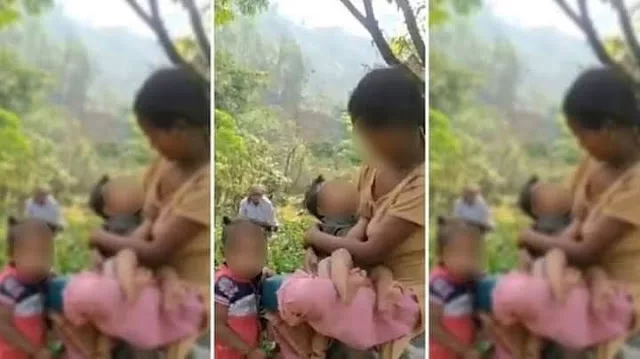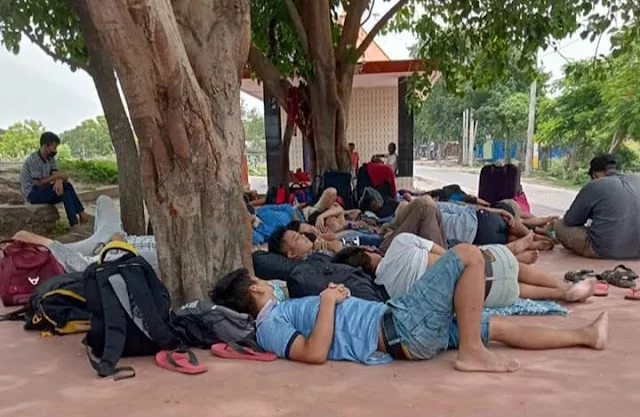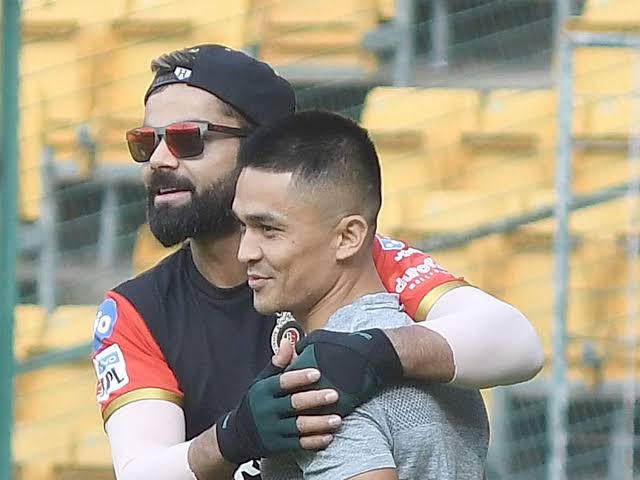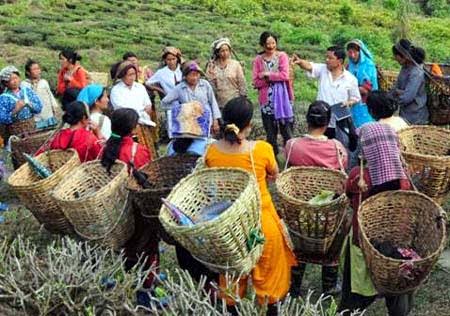 |
| Chhabilal Upadhyaya (Nepali:छबिलाल उपाध्याय) |
CHABILAL UPADHYAYA’S EARLY LIFE
Babu Chhabilal Upadhyaya (Ghimire) was born in 1882 A.D. He is the second son of Late Kashinath Upadhyaya (Ghimire) and Late Bishnumaya Devi. At the time of his berth his parents were residing at Burigang area near Biswanath Chariali of present day Sonitpur District of Assam. Like other Assamese-Gorkhali people they were also in search of a suitable place preferably a high land for their residence and a grazing land for their cattle. The primary source of income of such Gorkhali people was cattle farming and cattle rearing and as the time passes they started cultivation. Upadhyaya’s family also falls in the same stream. Chabilal Upadhyayas shifted from Burigang area to Borgang Sukansuti area and finally came to Mazgaon (Gangmouthan).This was some time in 1886 when Chabilal was at the age of four. It is said that his primary education started at Hatibondha Primary School in Bengali medium. But this Hatibondha Primary School was not there in present day location; rather it was in old Hatibondha village which was located about two to three miles distance in the south-east direction from the present School. The village was eroded by the river Brahmaputra or washed away and the school was later shifted to present day location. As there was no other higher educational institution in the nearby locality, he had to finish his academic studies just in his primary level. But his alert and kind father had searched for a teacher to give him knowledge of Sanskrit, Assamese and also for English language. He also got necessary knowledge of arithmetic and geography by the same teacher. Meritorious master Chabilal was extra-sharp and equipped himself with moralities. He studied Amarkosha, he learned the Anhik Padhati, he recited the morning prayers and he practiced Karmakandas (from the Yayur Veda). He was so eager to acquire knowledge that despite of the evils created by his age, when there was British Raj flourishing everywhere in India, when it was not easy even to listen a radio, or to go to a library to read a book or a paper, he somehow managed to read few Bengali daily newspapers: “The Ananda Bazar Patrika” and a weekly Bengali medium newspaper “Basumati”. He collected these papers from a Bengali gentleman Post Master of Behali Post Office though these were stale enough. He also showed his interest in studying Bengali novels. He got those novels from a kind and generous Bengali doctor of Borbheel Tea Estate. He had his family like relations with these gentlemen, for all of them used to come and go to the houses of one another for quite a long time. And in the process Chabilal was well versed with Bengali language and literature and Bengali people around him, As he was in the threshold of his manhood he was well acquainted with different news papers of the said language, he had studied the works of Bankim Chandra Chattopadhyaya , Saratchandra, the essays and novels of Kamaladevi Chattopadhyaya, the Lives of Swami Vivekananda and Raja Ram Mohan Roy. He studied the Bengali version of Krittibasi Ramayana and Kashidasi Mahabharata. He was able to feel the taste and the usefulness of literature, and he felt the need of social reform from his above reading. He had also formed for himself a good concept of Hindu religion.
He bore practical worldly knowledge. He had a good number of companions with whom he practiced swimming, rowing boats, catching and transhipping wood and logs that were brought by the flooded water of Borgang and the Brahmaputra river, to the river bank and so on. His long limbs and tight muscles, his big forehead, his long and not a small nose, his bright eyes and a pleasant face with manly moustache fit his tall and healthy figure. It well expressed his personality. He was brave and intelligent, he could think and analyze and could give decision and accordingly he could lead his companions, and on the other side he belonged to a well-to-do family. And that’s why he was invited and he was obeyed with honor.
The mighty Wheel of the Time revolves round. During the year 1919 the Upadhyaya family was residing in permanent nature at Mazgaon (Gangmouthan) but their buffalo farm (locally called Goth or Khuti) was in Kaziranga Reserve Forest with due Professional Grazing Permit. There were many other graziers of different communities, namely, Miri, Assamese and Gorkhali; with due permits. As in the case of the landed property was brought to book to for primary purpose of collecting taxes rather than to regulate it, the cattle property was also brought within the purview of The permit system by the British Administration to levy taxes. Before this system, graziers were asked now and then to shift their farm to other locations called “tapu”- the river island or char area of the river Brahmaputra, on the plea that their present Char area falls in the Kaziranga Game Reserve, which was whimsical, wantonness and unlawful. And hence, the graziers bowed their head on the system for they thought that if they would pay the Grazing Tax they would not be disturbed. The time wheel was moving smoothly, but how could an ill habit of evil spirit calm down merely for a system! Under the influence of such uncalled-for spirit, suddenly a bolt was thrown from the blue with a thundering sound “Be off with your buffaloes! This is only for wild animals!” The Administration not at all considered that these graziers have their due permits issued by the administration itself, the tyrants burnt their Khutis to ashes. The blazing flames of the fire not only laughing arrogantly by burning their Khutis but also burnt their sense of security, hopes and aspirations. The simple shepherd like people cried for help. All the people came to Chabilal, who himself was suffering from the atrocities of the British administration. He thought the action was illegal and interference on the means of livelihood. So he discussed with his people and decided to fight against the unlawful act of the government. He moved for Justice. He met Chandra Nath Sharma, an intelligent and patriot advocate. Upadhyaya briefed the matter to Sharma and Sharma in turn gave him solace. Chandra Nath also talked about how people of all over India are going against British rule. He also stated Upadhyaya how Gorkhali people can participate and contribute to the mother land. Chabilal realized that time has come to serve the Mother land and he too gave his commitment that all the Gorkhali people residing in Behali and other adjoining areas will come forward. Chabilal came out successfully in the case that graziers could continue to keep their buffaloes in their own place. Now, Chabilal explained people how British Raj is doing wrong to Indian People and the public in turn dissatisfied, stand against British Raj and how they are willing to get freedom from the foreign rule. He stated that all these movements were under the leadership of Gandhiji who was later known as Bapu and Mahatma Gandhi. It is worthy to mention here that Gangmouthan-Mazgaon became residential area prior to 1886 and at the end of the nineteenth century Gorkhali people were inhabiting in villages and localities like Batiamari, Kamal Pokhari (now Kamar Pukhuri as Revenue village), Kouri Pathar, Gomiri, Teleni, Dipura in the eastern side of Mazgaon, and Burigang, Pani Bhoral, Bhanganbari, Panpur,Gorpal, Koldarighat, Lokhra (Lakhara), Bura chapari, Bhurbandha, Naubil (Nabil),Teligaon, Singri, Sittalmari in the west, that is to say, everywhere there is in the then sub-division of Tezpur, Gorkhali people were mixing themselves with Assamese, Missing, Boro, Koch and Rajbanshi people. So, after his victory in the case as stated, Chabilal, irrespective of any race, visited the areas, informed the people and motivated them to come forward in the National interest. The public, as they realized that it is a chance to do something for the mother land extended their full support.
Chabilal Upadhyaya went to Jorhat,1921.
Chabilal Upadhyaya was already in the field of Non-Cooperation movement lead by Mahatma Gandhi and was known among the leading personalities of greater Assam. He was invited with his colleagues to Jorhat conference of Assam Association representing the people of the Kaziranga Game Reserve viz. the Khuti people irrespective of all races as well as all other people of Tezpur Sub-Division including Nepali community. There were many other people in the leading role in the area and all had supported Babu Chabilal on the great cause of National Freedom Movement. The Assam Association was the first and foremost political organisation of Assam at that time. Many talented leaders from different parts of Assam, to name few of them were – Tarun Ram Phukan, Nabin Chandra Bordoloi, Dr. Hem Chandra Barua, Amiyo Kumar Das, Kuladhar Chaliha, Faiznur Ali, Prasanna Kumar Barua, Lakheswar Barua,, Lakhidhar Sharma, Gopinath Bordoloi, Bishnuram Medhi were devoted to the cause of National Interest and except Tarun Ram Phukan all were present in the conference venue in Jorhat. The above conference of the Assam Association was presided over by Babu Chabilal Upadhyaya. That was the last meeting of the said Association and by the Resolution taken on the meeting making it a historical event, the Assam Association was merged for ever into Indian National Congress. Karmabir Chandra Nath Sharma thought that the Graziers’ problem should be treated as the problem of the state and all the Khuti People should be made active member of the nation wide Non-Cooperation movement. As he thought, so was the declaration of Chabilal that “I would try my best until my death” to bring the problem out from its miniature state to the level of provincial problem. Accordingly all the Nepali people joined as active members in that great cause of Nation. The thoughts and feelings and endeavours of Chandra Nath Sharma were expressed and executed and the conference achieved its aims and objectives.
If the soul of Mahatma Gandhi was in search of freedom from the tyranny of British people and British Rule against fellow Indians, the heart of Chabilal Upadhyaya cried for the cruelty of British Administration and British machinery on Kaziranga people. Both of them thought for their people. Chabilal with all the leaders in Assam joined actively with the non-cooperation movement lead by Gandhiji. He did not leave any stone unturned in the nation wide non-cooperation movement. The blazing flame of brute fire of Kaziranga turned into ever greatest protest as Non-cooperation movement against the British Empire. And Chabilal, was sent to imprisonment for three months. To keep him away from the movement and pro people activities, they tried to tempt him, they tried to divide him with his leaders and followers, they tried to punish him, but of no avail, he remained unmoved in his decision. For his capacity to take right decision in right time, for his heroic manner and bravery, for his pains taking attitude and for his patriotism he became popular among the people and in the state and national level elite society.
He actively participated in the Swaraj Fund of Lokmanya Tilak, and gave company to Karmabir Chandra Nath Sharma. There was a requirement to be fulfilled by the people of Assam which was known as ‘quota’ of the Fund. It was fulfilled before the due time. The British administration could not help itself but snatched back his gun with cartridges and a notice of expulsion was served under the Foreigner’s Act stating Chabilal is a Nepali of Nepal. Chandra Nath Sharma felt sorry for such an act of ‘immorality’ and ‘meanness’ of British bureaucrats. Chabilal exclaimed with joy in such action and said, “ ” meaning “I become happy” (for I have done something for my motherland).
Chabilal thought it appropriate the call of Non-cooperation after the incident of Kaziranga embezzlement and massacre of Jalianwala Baugh. He started with devotion to enlarge the books of record with the new name of volunteers, to boycott the foreign garments, to motivate and emphasize the people to give up the habit of intoxicant material like ale and liquor, puppy and ganja etc. and to start establishing Swadeshi schools. To help him his companions were Bogiram Saikia, Molan Chandra Sharma, Powal Chandra Bora, Pandit Duttaram Das, Ramlal Upadhyaya, Hari Prasad Upadhyaya, Tikaram Upadhyaya, Brihaspati Upadhyaya, Hari Prasad (Ram Babu) Upadhyaya, Bhishma Prasad Upadhyaya, Troilokyanath Sharma, Kanak Chandra Sharma, Bijoy Sharma, Ram Prasad Agarwala, Jwala Prasad Agarwala, Nabin Chandra Bhattacharya and many more willing workers. To give him timely advice and blessings there were district level leaders and well-wishers who were Chandra Nath Sharma, Lakhidhar Sharma, Amiyo Kumar Das, Mahadev Sharma and Gunabhiram Barua.
Chabilal, when he was in his manhood, full of his morals and creative ideals, his life was moulded and prepared for the benefit of all. He learnt from and experienced with the environment of the state that what was the value of education and culture. He realized that education and culture could only improve the condition of Nepali as well as the greater Assamese community. As was thought, so was the action. With the help of his friends and fellows, he had taken steps to improve the No. 41 Hatibondha Primary School to Hatibondha Combined Middle School. He then took next step to give education for girls and in 1935 Gangmouthan Girls’ M.V. School was established. To give the taste of education and culture he encouraged the youth who were educated and set up an institution called Mazgaon Nepali Theatre Party in 1929, a full- fledged platform with a library which was at that time the second only in the entire North Bank of Brahmaputra leaving Baan Theatre at Tezpur (1901). Step by step he forwarded, he thought, there were no higher education centre from Boronga Bari to Biswanath Chariali. Without a higher educational institution the people could not go ahead. So he thought of a High School and discussed the matter with local people. He explained the need of a high school. He had to appease and convince them all. He proposed to donate the Mazgaon Nepali Theatre Party with its well furnished library for the school, the fiscal value of which at present day would be Rs. 2.5 lakhs . After flowing much water on the subject, a General Body Meeting was held on 26th of February, 1941 at Hatibondha CM School and it decided unanimously to establish “Gangmouthan High school”. Later this was renamed as Behali High School and was upgraded in 1985 to Behali Higher Secondary School. He further added a feather to it by constructing an auditorium in memory of his parent – “Kashi-Bishnu Prekshyagriha”. He extended his help to Biswanath college with a purse of Rupees Thirty thousand only.
He worked for society. In 1928 with the help of his good guys a committee called Abhyuthan Samity was in existence. It cordially received Godan, Bhumi Daan, artha daan or Bastra daan (donation of cows, land, money and clothes respectively) and such donated amount and materials were used for schools, library, theatre and rest was treated as contingency amount for the society. He worked to stop child marriage system from the society. He also acted for women education.
Behali High School had just been completed its first anniversary, on 8th of August,1942, the Congress , at Birla Bhawan, Bombay declared its Quit India Movement. On the way to imprisonment Gandhiji raised his slogan “do or die” to get freedom.
Chabilal Upadhyaya too took the chance. There was movement everywhere in the country. The Second World War was opposed. The demand for freedom was seen everywhere. The teachers and students of Behali High School also went on strike. Village level Primary committees became active. The training of Shanti Sena (Peace Keeping Force of public) started in different places. The Mrityu Bahini or Death Squad were formed and trained in different remote places. They all decided to hoist three numbers of the Congress flags bearing the symbol of Charkha from three different directions. Yet there was non-violent motive. For the people thought if the police or military force peacefully allow them they would offer them garlands and do their pious work of hoisting their beloved Flag and if any bullet hurt them they would still unfurl the Flag at the roof of the Behali Police Station. So on 20th September,1942 they started for Behali Police Station. The Mrityu Bahini was in the front followed by Shanti Sena and thousands of village people moved with a garland in one hand and a placard on other and on their tongue “Vande Mataram” , “Inclub, Zindavad”, “Swadhin Bharat Ki Jai”. At that time in different parts of India people had a very popular patriotic song which they used to sing – “Kadam Kadam Badhaye Ja,/ Khusi Ke Geet Gaye Ja, / Yah Zindagie Hai Koum Ki, Tu Koum Par Lagaye Ja….”. Unlike Gohpur nothing unwanted was happened at Behali. People won their coveted victory. But the joy and happiness of this victory could not last long. The police started to suppress the movement. On the day of Bhatri Dwitiya (Just a day after Deepawali) the police arrested Chabilal Upadhyaya, his two brothers Ramlal and Hari Prasad followed by Bogiram Saikia, Kumud Chandra Sharma, Rabiram Saikia, Molan Sharma, Dr. Ananda Prasanna Dutta, Sarada Prasanna Dutta, Magur Barua, Baliram Duara, Nandeswar Barua, Roopram Barua, Budheswar Bora, Bishnulal Upadhyaya, Keshab Chandra Sharma, Punyadhar Bora, Baneswar Saikia, Kamala Kanta Bora etc. But others like Lakheswar Hazarika, Mitralal Upahdyaya, Jagannath Bhattarai, Debidutta Poudel, Durga Sharma, Debi Prasad Sharma etc. were working underground.
It would not be out of place to mention here that the three first ladies who joined the Mrityu Bahini (Death squad) and they were Tileswari Mahanta, Gujeswari Devi and Padma Saikia. One Jaman Singh Gole was accused and escaped from the Police custody. He was, it is said, himself a “Platoon”.
Such a great soul of this part of land, Babu – Father of All Assamese-Nepali of the state, left us all on 24th of January,1980. We all the public, pay our deep regards on this auspicious moment of Platinum Jubilee, 2015-16 of BEHALI HIGHER SECONDARY SCHOOL.
“ I have many things to do. I hope, I would come again to complete my work.” – CHABILAL UPADHYAYA
Ref. Chabilal Upadhyaya- by Late Bishnulal Upadhyaya,
Shailaputri- Ed. Uma Pokhrel, Gangmouthan
Behali Darpan- Behali HS School, Golden Jubilee , Ed-Renu Saharia
Prepared by: Kishore Khatiwarah, Gangmouthan
Sources – behalihss.org , Wiki





